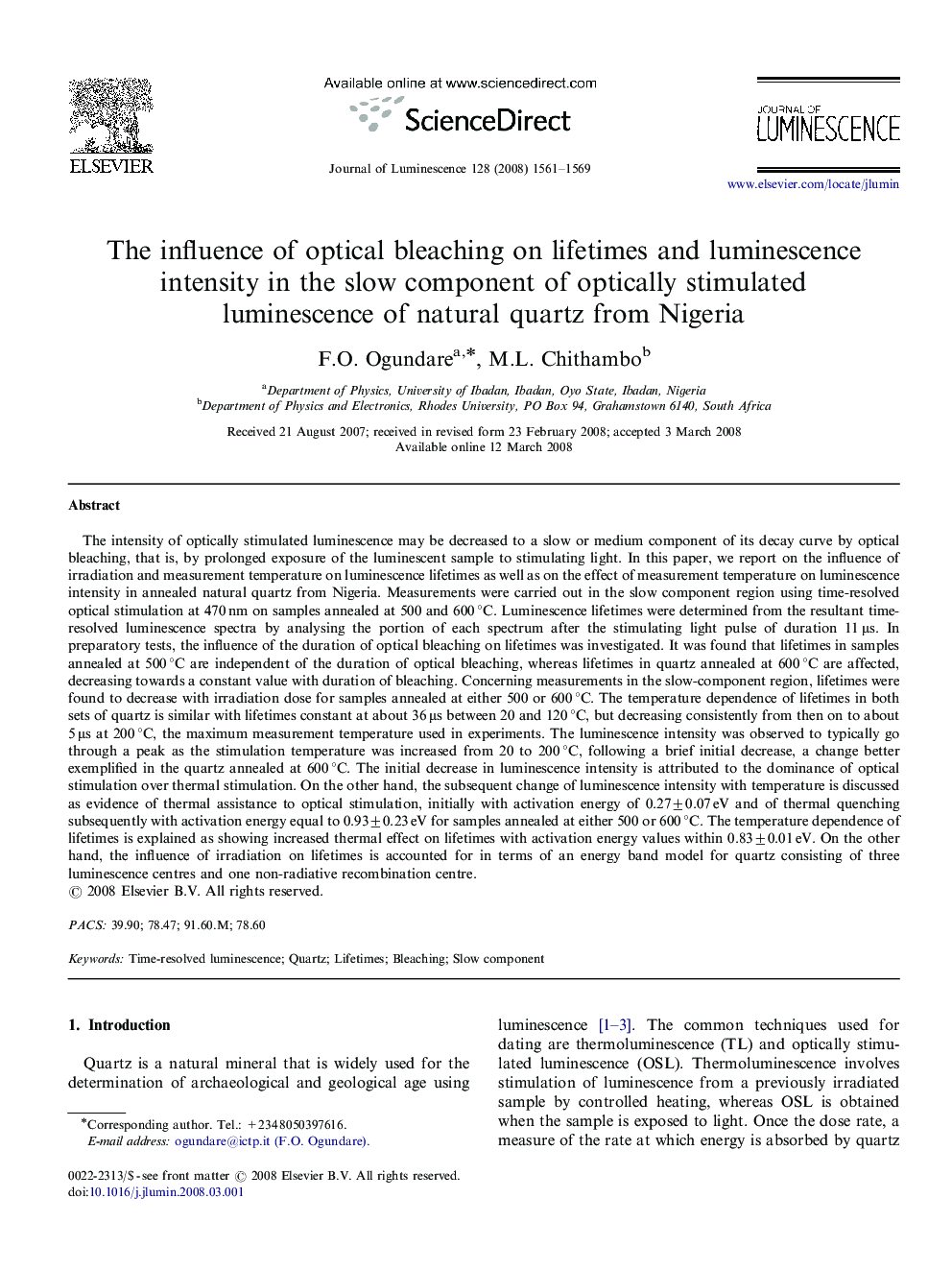| کد مقاله | کد نشریه | سال انتشار | مقاله انگلیسی | نسخه تمام متن |
|---|---|---|---|---|
| 5403037 | 1392750 | 2008 | 9 صفحه PDF | دانلود رایگان |
عنوان انگلیسی مقاله ISI
The influence of optical bleaching on lifetimes and luminescence intensity in the slow component of optically stimulated luminescence of natural quartz from Nigeria
دانلود مقاله + سفارش ترجمه
دانلود مقاله ISI انگلیسی
رایگان برای ایرانیان
کلمات کلیدی
موضوعات مرتبط
مهندسی و علوم پایه
شیمی
شیمی تئوریک و عملی
پیش نمایش صفحه اول مقاله

چکیده انگلیسی
The intensity of optically stimulated luminescence may be decreased to a slow or medium component of its decay curve by optical bleaching, that is, by prolonged exposure of the luminescent sample to stimulating light. In this paper, we report on the influence of irradiation and measurement temperature on luminescence lifetimes as well as on the effect of measurement temperature on luminescence intensity in annealed natural quartz from Nigeria. Measurements were carried out in the slow component region using time-resolved optical stimulation at 470 nm on samples annealed at 500 and 600 °C. Luminescence lifetimes were determined from the resultant time-resolved luminescence spectra by analysing the portion of each spectrum after the stimulating light pulse of duration 11 μs. In preparatory tests, the influence of the duration of optical bleaching on lifetimes was investigated. It was found that lifetimes in samples annealed at 500 °C are independent of the duration of optical bleaching, whereas lifetimes in quartz annealed at 600 °C are affected, decreasing towards a constant value with duration of bleaching. Concerning measurements in the slow-component region, lifetimes were found to decrease with irradiation dose for samples annealed at either 500 or 600 °C. The temperature dependence of lifetimes in both sets of quartz is similar with lifetimes constant at about 36 μs between 20 and 120 °C, but decreasing consistently from then on to about 5 μs at 200 °C, the maximum measurement temperature used in experiments. The luminescence intensity was observed to typically go through a peak as the stimulation temperature was increased from 20 to 200 °C, following a brief initial decrease, a change better exemplified in the quartz annealed at 600 °C. The initial decrease in luminescence intensity is attributed to the dominance of optical stimulation over thermal stimulation. On the other hand, the subsequent change of luminescence intensity with temperature is discussed as evidence of thermal assistance to optical stimulation, initially with activation energy of 0.27±0.07 eV and of thermal quenching subsequently with activation energy equal to 0.93±0.23 eV for samples annealed at either 500 or 600 °C. The temperature dependence of lifetimes is explained as showing increased thermal effect on lifetimes with activation energy values within 0.83±0.01 eV. On the other hand, the influence of irradiation on lifetimes is accounted for in terms of an energy band model for quartz consisting of three luminescence centres and one non-radiative recombination centre.
ناشر
Database: Elsevier - ScienceDirect (ساینس دایرکت)
Journal: Journal of Luminescence - Volume 128, Issue 10, October 2008, Pages 1561-1569
Journal: Journal of Luminescence - Volume 128, Issue 10, October 2008, Pages 1561-1569
نویسندگان
F.O. Ogundare, M.L. Chithambo,